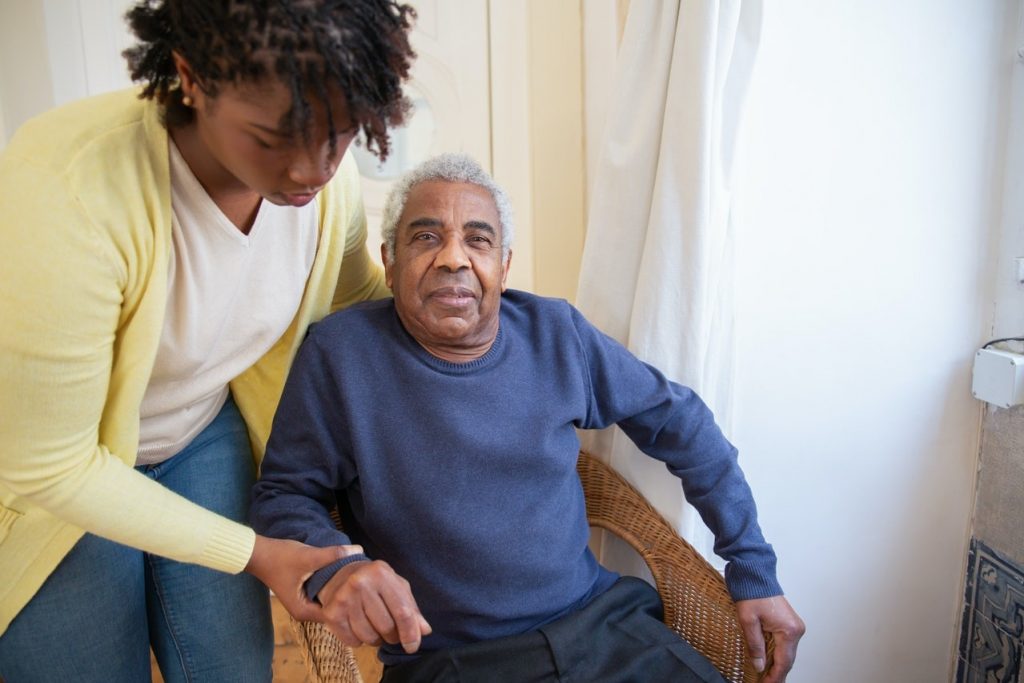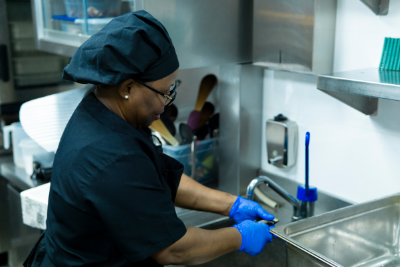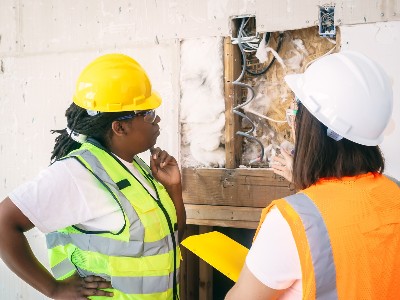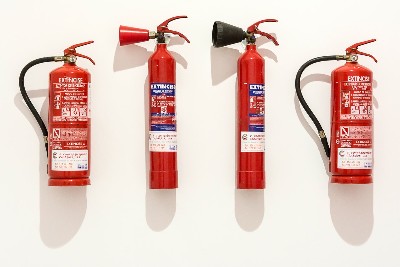Fire Safety in Care Homes: A Guide

Estimated reading time: 12 minutes
Introduction
Whether you work in a home for people with disabilities, the elderly, those who need hospice care or anyone else for that matter, fire safety in care homes is a vital and often quite intimidating issue. Due to their size and the needs of the people who live in them, fire safety regulations for residential care homes are detailed and demanding.
Reading through all the legislation and understanding your legal requirements can be a time-consuming, daunting task. To help, we’ve summarised everything you need to know in a concise guide.
What causes fires in care homes?
Before we look at how we should approach fire safety in care homes, we should figure out exactly what causes fire in these places. On average, there are fires in 388 UK care homes every year.
According to the London Fire Brigade, 41% of those care home fires are caused by cookers and the act of cooking, 21% by kitchen appliances and 13% by smoking. It’s probably to be expected that kitchen-related incidents form 62% of total fire incidents. Residential care homes care and cater for tens to hundreds of people. Cooking and delivering a high number of meals puts strain on both the kitchen and the staff working inside them.

Unclean extractor fans and ventilation systems are the leading cause of fire in commercial kitchens in the UK. It’s easy to imagine how, pressed for time and overworked, a kitchen staff member may neglect an extraction fan. After all, it’s not the most obvious fire hazard in kitchens with gas-burner stoves and industrial ovens.
If you’re a keen mathematician, you may notice that the London Fire Brigade haven’t accounted for 15% of care home fires in their statistics. Before we move into how to tackle fire safety in residence homes then, here’s a couple of alternative, less common causes to consider, which might make up that 15%:
Electricals
As with most commercial buildings, heavy and load-intensive use of electricity could become a problem in a care home. Perhaps you have a number of recreation rooms with radios and televisions dotted about for residents. Kitchen appliances may be poorly-wired, improperly-inspected and/or be old.

The residents in the home may not be particularly electrically-minded and might overload plug sockets with too many devices. All of these possibilities could be worsened if yours is an old building, with dated and damaged wiring.
Lack of de-escalation
It could be that one of the biggest issues residents face is not knowing how to deal with a fire or not getting the proper help from staff. Residents may not have the mental wellbeing to recognise that a fire has started or what dangers it may pose.
Arson
Unfortunate as it is, it could be the case that a resident who is not very well may intentionally start a fire in their room or in a communal setting.
What are the possible consequences of fire in a residential home?
The human cost
Thankfully, fire casualty rates in UK care homes aren’t too high. They’re certainly not the lowest, often double the rate of food & drink and entertainment venues, but they’re much lower than other places of mass-residence, like hospitals and prisons. That said, if a care home doesn’t meet the necessary fire safety requirements, the consequences could be massive.
Care homes may host the same number of occupants as a school, depending on their size, with those residents also staying in the building(s) for more than double the time of students. Fires are arguably more dangerous at night, with sleeping residents more vulnerable to unwitting smoke inhalation. Furthermore, mentally and/or physically vulnerable residents may be slower to react to a fire and remove themselves from the situation.
Such is the possible casualty rate in a care home that UK fire services, as policy, intend to respond more quickly to residential home fires.
The financial cost
From a purely business perspective these fires can be extremely costly. Fines alone have been as big as £380,000 in the UK for care home fires. This is on course on top of any repair costs, which could stretch into the millions, depending on the size of the home and the extent of the damage.
Consider too the effect on any future earnings. People entrust care homes with the protection of their close family members. It’s unlikely that a home reopening after a fire would have a long list of residents waiting to register for a room.
What is the legislation regarding fire safety in care homes?
There are two central pieces of legislation covering a care home owner’s fire safety responsibility:
The Care Home Regulations Act (2001)
Amongst some other important subjects, a section of this Act tells of how to approach fire safety specifically within a care home. This responsibility for fire safety falls on the owner or manager of the property. Some key takeaways from the regulations are:
- Seek advice from the local fire authorities regarding your home’s approach to fire safety
- Ensure your staff have received some formal fire safety training, including how to deal with an actual fire incident
- Designate a fire warden(s) for the premises
- Reduce the possibility of a fire by combating potential fire hazards
- Create a fire detection system
- Regularly practice fire drills with both staff and residents and document the process
The Regulatory Reform (Fire Safety Order) 2005
The majority of the requirements for fire safety in non-domestic premises is oriented around the Regulatory Reform (Fire Safety) Order 2005.
The first action specified in the document is declaring a Responsible Person. This person will be in charge of and responsible for all fire safety procedures onsite and should specifically be in the hands of someone with ‘control of the premises’. In care homes, this would typically be:
- Employers
- Facilities Managers
- Owners
- Landlords
- Third-Party Risk Assessors
It’s important to realise that there can be more than one Responsible Person. If, by the legislative definition, there are a number of people with ‘control over the premises’, they must work collaboratively in the interests of fire safety.
The Responsible Person has a number of specific duties:
- Delivering a Fire Risk Assessment
- Communicating the findings of this assessment to staff
- Maintaining fire safety measures
- Providing formal fire safety training to all staff
- Planning emergency procedures
Fire risk assessment in residential care premises
Though it’s not legally-binding legislation, the government has released a comprehensive guide on fulfilling your legal duty for fire risk assessment in care premises. It’s intended for all buildings in which residents would require carer assistance to be safe in the event of a fire.
Who enforces this legislation?
Fire safety enforcement is under the jurisdiction of local fire and rescue authorities. The local fire service is entitled, at their discretion, to inspect care residences and you are obliged to allow that inspection.

If a premises fails inspection, there is a progressive scale of consequence:
- The local authority could issue alteration notices, which demands immediate change to fire safety matters onsite.
- Enforcement and prohibition notices could follow, leading to site closure, temporarily or permanently.
- If such notices aren’t adhered to, unlimited fines and prison sentences can follow.
Abiding by the legislation
As mentioned earlier, your first task, prior to filling out a fire assessment, is to declare a so-called ‘Responsible Person(s)’. Most often, in the case of a care home, this person will be an owner, manager or facilities manager (or all 3). All people involved with management of the property must have created a consensus on who is the Responsible Person (s).
Fire Risk Assessment
Upon appointment, this Responsible Person(s) must undertake a fire risk assessment, with the following procedures:
- Identify all possible fire hazards.
- Identify people on the premises who may be at risk.
- Reduce and/or remove those risks.
- Record your findings, prepare your emergency procedures accordingly and provide fire safety training.
- Review and update this assessment regularly.
If the Responsible Person(s) doesn’t have the required competency for a fire risk assessment, you can hire a third-party risk assessor. Of course, this is expensive, as such assessors assume a certain level of risk themselves.
Common Risk Areas
Proper fire safety in care homes should be built on a proper fire risk assessment. When completing such an assessment, it’s important that you tailor it to your workplace. There’s no point copy-and-pasting the assessment criteria of an elderly residence of 40 beds onto a vulnerable people residence of 400.
That said, there are some fairly obvious, common risk areas to assess and improve within most care homes.
Evacuation procedures and assistance
People who live in care homes most likely need assistance in evacuation. Not only do they not have a legal obligation for it, people in care likely do not have the facilities to fully abide by a predetermined evacuation procedure. Accordingly, you must create an evacuation system which accounts for this.
In care homes there should be a personal emergency evacuation plan (PEEP) in place for each individual resident, detailing their needs and requirements. All staff should have access to, and be made aware of, these PEEPs.
Your carers must be properly prepared and know exactly which sections of the home they’re responsible for. They must know how to deal with a certain number of vulnerable people during a crisis, possibly needing to enter their rooms and wake them, taking into account their individual needs.
It can be useful to set the fire alarm off and record each resident’s response and reaction to it. In some cases, a loud continuous noise can provoke unexpected reactions including violent outbursts or even seizures.
Horizontal evacuation might be required in a care home, which means moving residents to safe parts of the building, away from the fire. This method is used if residents are bedbound, for example, and it is difficult to do a full evacuation.
Helping those with disabilities
To that end, some residents will likely be people with disabilities. Such disabilities could include psychiatric disorders, Alzheimer’s disease, wheelchair-use, deafness and blindness. Again, you must adapt to the needs of those in your care home.
For example, if you look after the elderly or infirm, consider using an evacuation chair to help them safely down flights of stairs. In addition, you cannot apply a one-size-fits-all approach. Imagine you have a resident who is hard-of-hearing and subsequently needs a strobe alarm to know when a fire occurs. Perhaps, on the same floor, there’s also a photosensitive-epileptic resident, who may have a seizure triggered by such a fire detection system.
These bespoke, complex arrangements for evacuation are key to planning for a fire. They might include planning room designations for certain residents far in advance.
Fire exit routes
As aforementioned, your staff must understand the precise evacuation system in place in the event of a fire. This includes fire escape routes.
Such routes must be predefined and kept unhindered. They must also be well thought-through. If you have a number of residents with low or zero mobility, create the easiest possible route for a carer to evacuate them. Cleared corridors on the ground floor, for example, would help carers to escort residents in wheelchairs off of the premises.
Fire doors play an important role in containing smoke and fire, helping to protect lives during an emergency. Staff members face the challenging responsibility of notifying residents in such situations, but confidence in the effectiveness of fire doors can help create a sense of calm.
Fire doors are designed to be heavy and must remain closed to function properly. However, for elderly care home residents, these doors can feel isolating, as their weight and rapid closure can make them difficult and even hazardous to navigate. This may discourage residents from leaving their rooms due to concerns about moving safely through heavy doors.
While it may seem convenient to prop or wedge a fire door open, this practice is highly dangerous. An open fire door cannot close during an emergency, allowing fire and smoke to spread quickly. This poses a significant risk in care homes, where residents often require additional time or assistance to evacuate safely. Proper usage of fire doors is essential to protect everyone in the care home.
Training your staff
You have a legal requirement to provide your staff with formal fire safety training. One such form of training is one of our courses. They’re comprehensive, clear and available in both in-person and online formats. What’s more, our Learning Management System (LMS) keeps a central record of completed, verifiable certificates for your staff, as acceptable evidence for the local authorities.
Fire Alarms
When testing fire alarms, it’s essential to prioritise resident welfare. Schedule tests for the same time each week and provide residents with advance notice to minimise disruption.
Care homes should have a L1 fire alarm system. This type of system offers comprehensive coverage, detecting fires across the entire building, including less-frequented areas like roof spaces. L1 systems are designed to deliver the earliest possible fire warnings, a critical feature in care homes where residents may need additional time to evacuate safely.
Maintaining a consistent fire alarm maintenance schedule is vital. Regular checks ensure the system remains fully operational, safeguarding both residents and staff.
Day-to-day fire safety in care homes
Below is a handful of good habits to take into consideration. You should include these in a regular fire safety routine:
- Maintain equipment – If you do have an assortment of fire safety equipment customised for your residents, take good care of it; it’s often expensive! Have your alarms tested and ensure any fire extinguishers are fully charged.

- Periodical fire drills – Undertake regular fire drills with your staff and residents. Test out your escape routes and ensure your staff get practice with the equipment they might use in a real-world scenario.
- Keep fire doors closed! – This is fairly self-explanatory. You should never proper open fire doors; they’re designed to give you time to escape in the event of a blaze.
- Take care of the hazardous areas – We’ve already looked at how the kitchen is the most common place a fire might start in a care home. If it’s dirty and uncared for, ensure your staff raise their standards. If there’s not enough staff compared to the workload, hire more. Similarly, enlist your carers’ help with monitoring your residents’ electricity use and smoking habits. Perhaps you could buy surge protectors for the recreation room, for example, and designate smoking areas for residents and staff who need a cigarette break.
Conclusion
Fire safety in care homes is a very real concern but it shouldn’t intimidate you. There’s regulation in place so that you and your residents stay safe. For more information, take a verifiable training course today.
